Overview of Yellow Woodsorrel, Oxalis stricta
Yellow woodsorrel, Oxalis stricta, is a native North American plant (also found in Eurasia) which is usually considered a weed. It has numerous common names, including common yellow oxalis, sour grass, shamrock, sleeping beauty, sour trefoil, and sheep’s clover. Synonyms inlcude Ceratoxalis coloradensis, Oxalis dillenii, O. europaea, O. prostrate, O. rupestris, and Xanthoxalis florida. It is found in 46 states but is most common in the eastern U. S. and into Canada.
Yellow woodsorrel is distinct from other wood sorrels in that the seed pods bend sharply upward on their stalks and the stalks also grow at a sharp angle from the main stalk (both angles are about 90 degrees). It also tends to grow in a more upright fashion than other wood sorrels (stricta means “upright”).
This herbaceous plant may grow either as an annual or as short-lived perennial. Although it prefers moist soil, and partial shade, it is tolerant of a wide range of conditions. It is commonly found in fields, woods and borders, along roadsides and in other waste areas, and will even grow in the cracks of sidewalks.
It is also a common summer annual in lawns. As one of the latest germinating annual weeds, it often fills in spots left in the turf after broadleaf weeds are killed by early spring herbicide applications. The delicate-looking plants grow 6-15″ tall – unless they are mowed off consistently in a lawn. They may form colonies arising from slender but tough underground stems (rhizomes), but more often are individual, seed-grown plants. The weak stems branch at the base and sometimes will root at nodes.
Identification of Yellow Woodsorrel
Leaves are alternate, smooth and palmately compound. Each leaf is divided into three heart-shaped leaflets similar to a clover leaf, with faintly hairy margins. The center leaflet is not on a short stalk. The leaves are creased and fold upward in half at night or when stressed (such as if picked or during storms). Most plants are green, but some have a purple cast.
The yellow flowers have 5 petals that are held in an open cup up to ½” across on a long stalk. They occur singly or in axillary clusters of up to five flowers. Blooms first appear in mid spring and continue through fall. The flowers are followed by elongated, ridged seed pods that are pointed at the end. The erect seedpods are held at right angles with their stems. Each ½-1” long capsule has five compartments with about 10 seeds in each compartment. When the pods are ripe, they dehisce (open explosively at the slightest touch), launching the seed as far as 8-10 feet.
The plant contains oxalic acid which can be toxic in excessive amounts.
Yellow Woodsorrel Management Strategies
Common yellow woodsorrel is best controlled by hand weeding and mulching. It pulls up quite easily and does not resprout from roots left behind. Try to remove plants before seed pods develop – although this may be difficult as it is good at hiding among other plants, producing seeds before it is ever noticed. Most herbicides are not very effective on Oxalis species. Pre-emergence herbicides, which prevent germination, are the most useful.
– Susan Mahr, University of Wisconsin – Madison
Last Update: Bruce Spangenberg, UW-Madison Extension, 2025

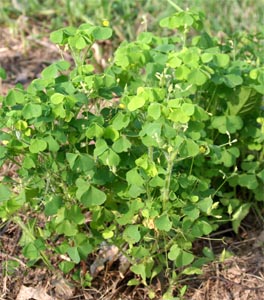
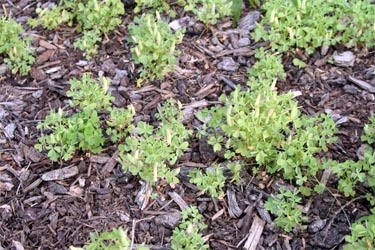
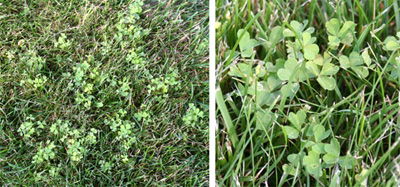
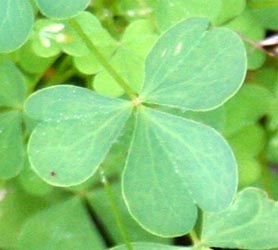
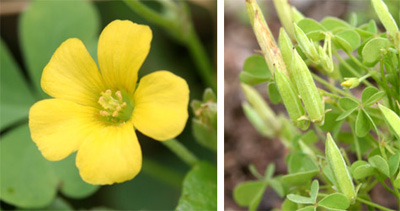
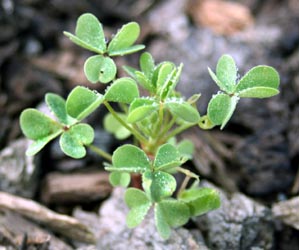




 ▶ Watch: Biology and Management of Canada Thistle, Bishop's Goutweed, and Creeping Bellflower
▶ Watch: Biology and Management of Canada Thistle, Bishop's Goutweed, and Creeping Bellflower Common Weed Seedlings of the North Central States
Common Weed Seedlings of the North Central States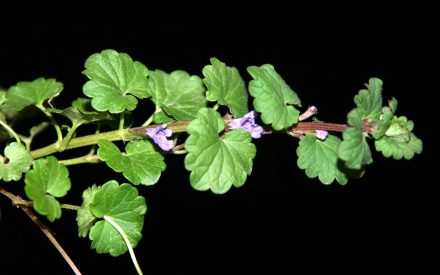 Creeping Charlie, Gleochoma hederaceae
Creeping Charlie, Gleochoma hederaceae Common Purslane, Portulaca oleracea
Common Purslane, Portulaca oleracea


